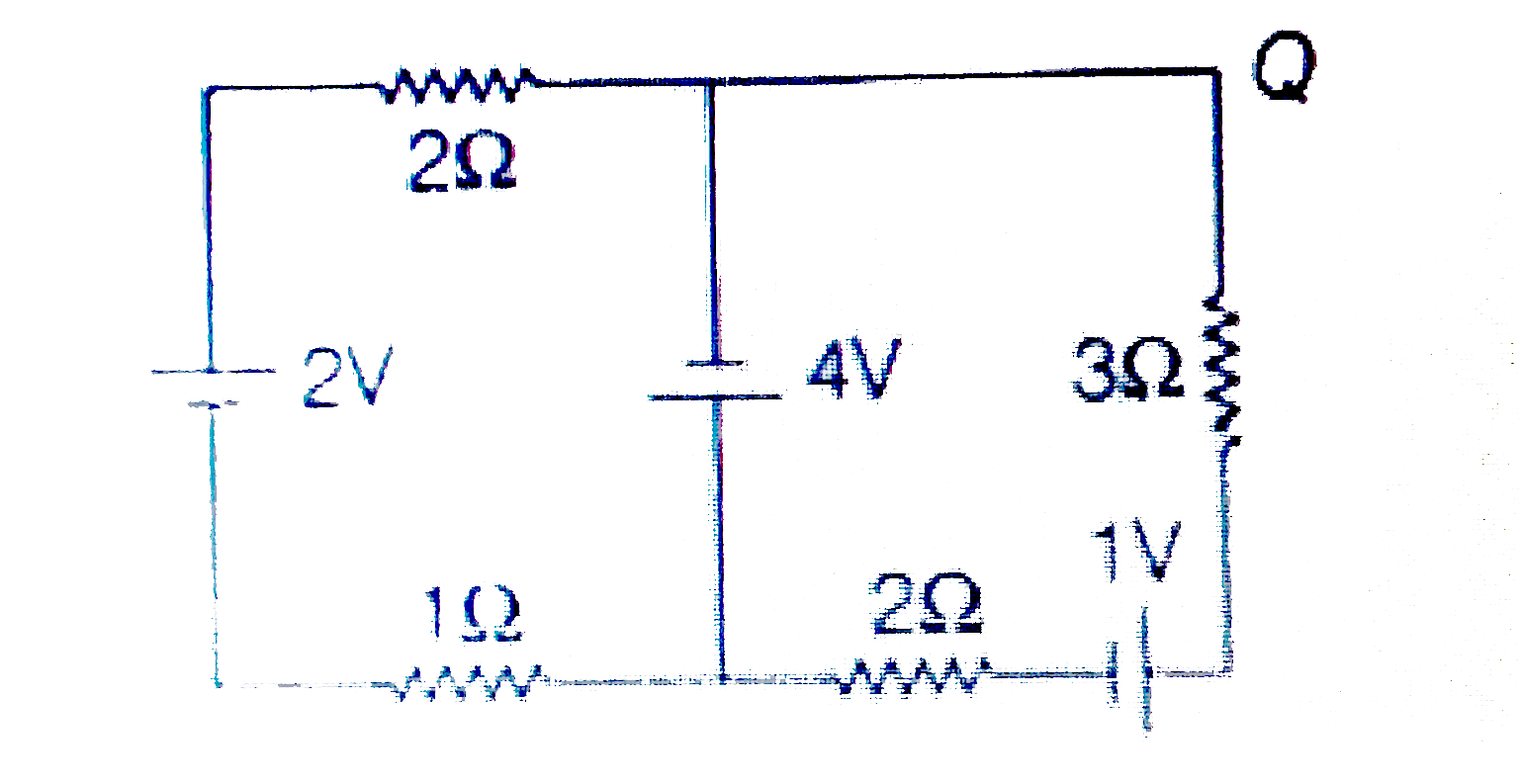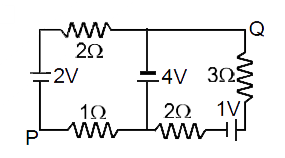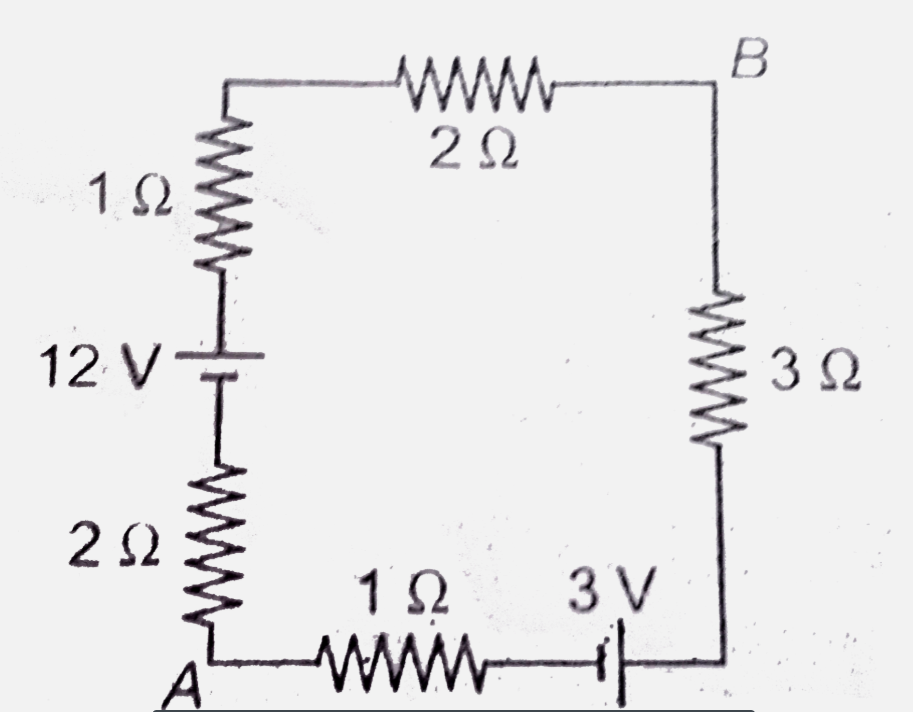The network shown in the figure is a part of complete circuit. What is the potential difference VB−VA when the current I is 5A and is decreasing at a rate of 103A/s?

In accordance with the law of potential distribution, for the given network, VA−IR+E−dIdtL=VB
And here I is decreasing (i.e., dI/dt is negative).
VB−VA=−5×1+15−5×10−3(−103)
VB−VA=−5+15+5=15V
Related Playlists
- BOOK - CENGAGE PHYSICSCHAPTER - INDUCTANCEEXERCISE - Solved Examples3videos
INDUCTANCE
- BOOK - CENGAGE PHYSICSCHAPTER - INDUCTANCEEXERCISE - Exercise 4.124videos
INDUCTANCE
- BOOK - CENGAGE PHYSICSCHAPTER - HEATING EFFECT OF CURRENTEXERCISE - Thermal Power in Resistance Connected in Circuit28videos
HEATING EFFECT OF CURRENT
- BOOK - CENGAGE PHYSICSCHAPTER - KINETIC THEORYEXERCISE - Question Bank31videos
KINETIC THEORY
Similar Practice Problems
- Question 1 - Select One
In the circuit shown, what is the potential difference VPQ?
 A+3VB+2VC−2VDnone
A+3VB+2VC−2VDnone - Question 1 - Select One
The network shown in the figure is part of a complete circuit. If at a certain instant, the current I is 5A and is decreasing at a rate 103A/s then VB−VA is
 A20VB15VC10VD5V
A20VB15VC10VD5V - Question 1 - Select One
In the circuit shown, what is the potential different VPQ ?
 A+3VB+2VC−2VDNone of these
A+3VB+2VC−2VDNone of these
Similar Questions
What is the potential difference VB−VA when the current i is 5A and is decreasing at a rate of 103A /s
View SolutionThe network shown in Fig. is a part of a complete circuit.What is the potential difference VB−VA when the current I is 5A and is decreasing at a rate of 102(A/s) ?
 View Solution
View SolutionIn the circuit (Fig.) what is potential difference VB−VA (in V) when current I is 5A and is decreasing at the rate of 103As−1
 View Solution
View SolutionIn the circuit shown , what is the potential difference VPQ?
 View Solution
View SolutionThe network shown in the figure is a part of a copmplete circuit. If at a certain instant, the current i is 5A and decreasing at the rate of 103As, then Vs−VA (in volt) is
'(##CEN_KSR_PHY_JEE_CO23_E01_022_Q03##)'View SolutionPotential difference VB−VA in the network shown is
 View Solution
View SolutionThe network shown in the figure is part of a complete circuit instant the current (I) is 5A and is decreasing at a rate of 103 A s−1, then the value of VB−BA is
 View Solution
View Solution

